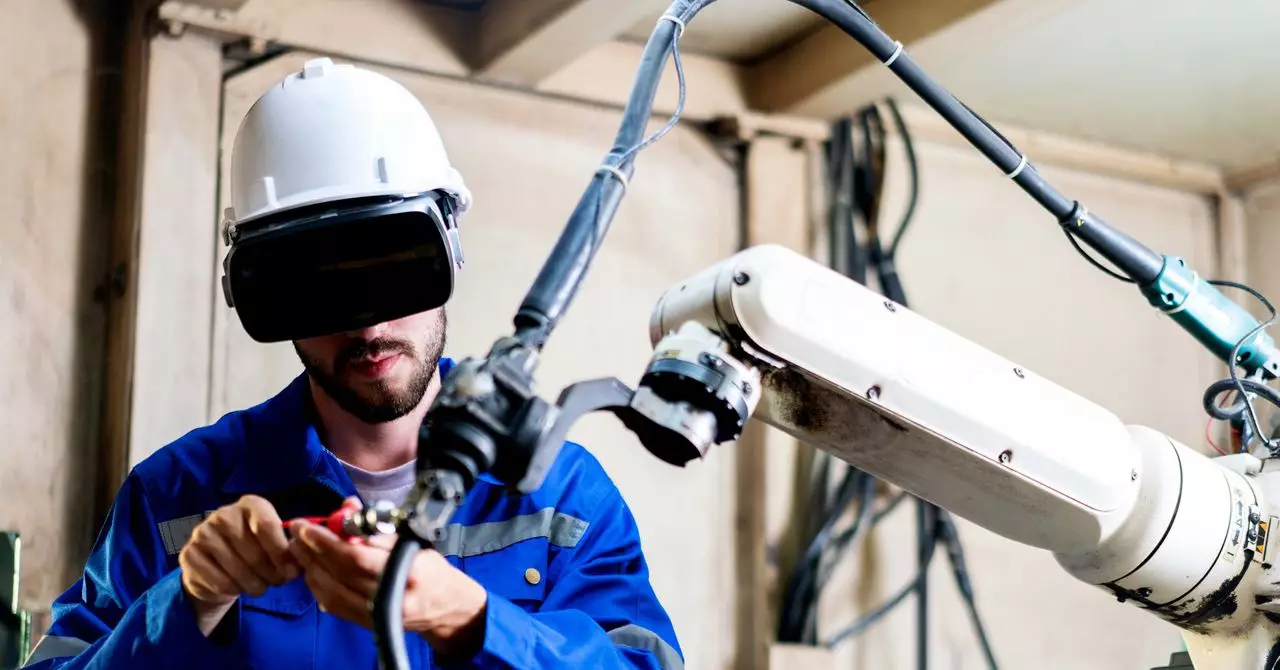The advent of the industrial metaverse is revolutionizing the way companies operate, particularly within the manufacturing sector. Gone are the days when manufacturers had to conduct physically exhaustive trials to ensure machinery and parts would seamlessly integrate into production lines. Today, a remarkable shift toward digital innovation is allowing manufacturers to simulate their processes in virtual environments before any physical work begins. This not only increases efficiency but drastically reduces costs and time, proving that the true value of the metaverse lies in its application for industry rather than social engagement.
The Rise of Digital Twins in Manufacturing
At the forefront of this evolution is the concept of ‘digital twins.’ These virtual replicas of physical spaces or processes allow manufacturers to visualize potential challenges and inefficiencies before they occur. Instead of manually pushing a car chassis through a physical assembly line to identify fit-related problems, engineers harness advanced software to run complex simulations. By streaming a 3D model through a digital replica of the factory, all snags or complications can be spotted beforehand. This proactive approach to problem-solving epitomizes the transformative potential of the industrial metaverse.
As Varvn Aryacetas, a Deloitte leader in AI strategy, emphasizes, it is about “bridging the physical world with the digital world.” His insight captures the essence of a burgeoning era where spatial computing fosters a synthesis of technological innovation, augmented reality, and simulation capabilities. The implications for manufacturing are immense—companies can refine processes that historically depended on trial and error, optimizing designs and layouts remotely.
Nvidia’s Omniverse: The Cornerstone of Virtual Manufacturing
A key contributor to this innovative shift is Nvidia’s Omniverse, which provides powerful tools for creating and managing simulations and digital twins. Rev Lebaredian, the vice president of Omniverse and simulation technology at Nvidia, describes the platform as an essential resource for navigating the complexities of modern manufacturing, especially as companies begin to integrate autonomous systems into their production lines. Omniverse acts not only as an interface for 3D simulations but also as a foundation for building a collaborative ecosystem where businesses can share designs and insights seamlessly.
From Lowe’s utilizing Omniverse for testing store layouts to BMW developing detailed virtual models of their plants, businesses across sectors are rapidly realizing the capabilities of this technology. By facilitating environments where companies can examine and refine their processes in real-time, the industrial metaverse emerges not merely as hype; it addresses real-world obstacles.
Innovative Use Cases in the Industrial Metaverse
Real-world applications of the industrial metaverse illustrate its diverse potential. Lowe’s, for instance, leverages digital twins to optimize store layouts before execution, minimizing costly physical alterations. Meanwhile, architectural firms like Zaha Hadid use virtual modeling for collaborative projects, breaking geographical barriers that once hindered global cooperation. Amazon has taken a cue as well, simulating entire warehouses to train robots and workers before their actual deployment. Each use case accentuates the increased efficiency and foresight that digital environments offer, emphasizing how this technology not only adapts but enhances operations.
BMW’s approach exemplifies this integration well. With comprehensive virtual models planning new factories, such as their latest in Debrecen, Hungary, the company transcends conventional nearsightedness in manufacturing. The ability to create expansive virtual factories packed with highly detailed 3D models—ranging from cars to equipment—allows BMW to perform meticulous testing and evaluation long before any brick is laid.
The Future of Industrial Metaverse
The industrial metaverse is projected to reach a valuation of $100 billion by 2030 according to the World Economic Forum, underscoring its undeniable significance. As companies increasingly pivot towards digital transformation, the industrial metaverse is set to become the standard rather than the exception. The intersection of virtual simulation, autonomous technology, and actionable insights signifies not just an evolution in how manufacturing is conducted but the heralding of a new age of digital craftsmanship.
The metaverse’s immersive technology is reshaping how industries visualize and execute their operations. From ideation to execution, the possibilities appear boundless, enabling organizations to navigate the complexities of manufacturing with unprecedented finesse and foresight. As the industrial landscape continues to adapt, embracing the complexities of the digital realm becomes essential for success in an ever-competitive marketplace.

